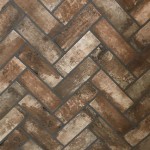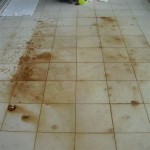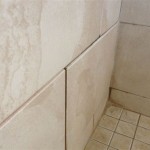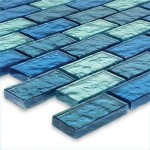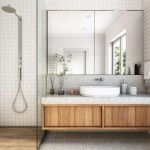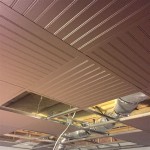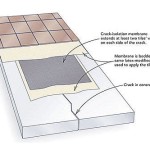Beautiful and Durable Patterned Ceramic Floor Tiles for Kitchen
The kitchen, often considered the heart of the home, demands flooring solutions that seamlessly blend aesthetic appeal with robust functionality. Ceramic floor tiles, particularly those featuring patterned designs, have emerged as a popular choice for kitchen renovations and new constructions. This article explores the benefits, design considerations, installation nuances, and maintenance requirements associated with patterned ceramic floor tiles in a kitchen environment, highlighting their ability to enhance both the beauty and practicality of this crucial space.
Ceramic tiles are composed of clay and other natural materials that are fired at high temperatures. This process renders them incredibly durable, resistant to water, stains, and scratches, making them ideally suited for the high-traffic, potentially messy environment of a kitchen. Patterned ceramic tiles elevate this practicality by introducing visual interest and allowing homeowners to personalize their kitchen design without sacrificing the inherent benefits of ceramic.
Durability and Longevity
One of the primary advantages of ceramic floor tiles is their exceptional durability. The high-firing process makes them incredibly hard and resistant to wear and tear. In a kitchen setting, where spills are common and foot traffic is heavy, this durability is paramount. Unlike some other flooring materials, ceramic tiles are not easily scratched by dropped utensils or damaged by water. This resistance allows the tiles to maintain their appearance for years, even with regular use.
The longevity of ceramic tiles is also a significant asset. When properly installed and maintained, they can last for decades, making them a cost-effective flooring solution in the long run. While the initial investment might be higher than some alternatives, the extended lifespan and minimal maintenance requirements often offset the upfront cost. This makes patterned ceramic tiles a sustainable and practical choice for homeowners seeking a lasting flooring solution.
Furthermore, ceramic tiles are resistant to fading from sunlight. This colorfastness ensures that patterned designs retain their vibrancy even in kitchens with abundant natural light. This is a critical consideration for kitchens that receive direct sunlight throughout the day, as some flooring materials can fade or discolor over time.
Design Versatility and Aesthetic Appeal
Patterned ceramic floor tiles offer unparalleled design versatility. They are available in a vast array of colors, shapes, sizes, and patterns, providing homeowners with almost limitless options for creating a unique and personalized kitchen space. From classic geometric designs to intricate floral motifs, the possibilities are endless.
The patterns can be used to create different effects within the kitchen. Bold patterns can add a dramatic focal point, while subtle patterns can complement existing décor without overpowering the space. The size and shape of the tiles can also be used to create visual interest. Larger tiles can make a small kitchen feel more spacious, while smaller tiles can add detail and texture.
Furthermore, patterned ceramic tiles can be used to mimic the look of other materials, such as wood or stone. This allows homeowners to achieve the aesthetic of natural materials while benefiting from the durability and water resistance of ceramic. This versatility makes patterned ceramic tiles a popular choice for homeowners seeking to achieve a specific design aesthetic without compromising on practicality.
The availability of custom designs further enhances the design possibilities. Homeowners can work with tile manufacturers to create unique patterns that reflect their personal style and preferences. This level of customization allows for the creation of truly one-of-a-kind kitchen spaces.
Ease of Maintenance and Hygiene
Ceramic tiles are remarkably easy to maintain, making them an ideal choice for busy kitchen environments. Their non-porous surface prevents the absorption of spills and stains, allowing for easy cleaning with a damp mop or cloth. Regular sweeping or vacuuming is all that is typically required to keep the tiles looking their best.
The resistance to moisture also makes ceramic tiles a hygienic choice for kitchen floors. Unlike some other flooring materials, they do not provide a breeding ground for mold or mildew. This is particularly important in kitchens, where moisture is common. The ease of cleaning and hygienic properties of ceramic tiles contribute to a healthier and more sanitary kitchen environment.
Grout lines, which are the spaces between the tiles, can be susceptible to staining and discoloration. However, the use of epoxy grout, which is more resistant to stains and moisture than traditional cement grout, can mitigate this issue. Sealing the grout lines regularly can also help to prevent stains and maintain the appearance of the floor.
Chemical resistance is another key advantage. Ceramic tiles are not easily damaged by common household cleaners, allowing homeowners to use a variety of cleaning products without fear of damaging the floor. This makes it easier to keep the kitchen clean and sanitary without resorting to harsh or abrasive cleaners.
Installation Considerations
Proper installation is crucial to ensuring the longevity and performance of ceramic floor tiles. It is generally recommended to hire a professional installer to ensure that the tiles are laid correctly and that the subfloor is properly prepared. A poorly installed tile floor can be prone to cracking, chipping, and other problems.
The subfloor, which is the surface beneath the tile, must be level, clean, and structurally sound. Any imperfections in the subfloor can affect the appearance and stability of the finished floor. A layer of cement backer board is often installed over the subfloor to provide a smooth and stable surface for the tiles.
The layout of the tiles should be carefully planned before installation begins. This is particularly important for patterned tiles, as the pattern needs to be aligned correctly to achieve the desired effect. A dry layout, where the tiles are placed on the floor without adhesive, can help to visualize the final result and identify any potential problems.
The choice of adhesive is also important. The adhesive should be appropriate for the type of tile being used and the specific conditions of the kitchen environment. A high-quality adhesive will ensure that the tiles are securely bonded to the subfloor and will prevent them from loosening or cracking over time.
Cost Considerations
The cost of patterned ceramic floor tiles can vary depending on the type of tile, the complexity of the pattern, and the size of the area being covered. Generally, more intricate patterns and higher-quality tiles will cost more than simpler designs and standard tiles. The cost of installation should also be factored into the overall budget.
While the initial cost of ceramic tiles may be higher than some other flooring options, the long-term benefits, such as durability, low maintenance, and longevity, often make them a cost-effective choice in the long run. The extended lifespan and minimal maintenance requirements can offset the upfront cost over time.
It is important to obtain quotes from multiple installers before making a decision. This will help to ensure that you are getting a fair price for the installation work. Be sure to inquire about the installer's experience, qualifications, and references.
Consider the cost of potential repairs or replacements when evaluating different flooring options. Ceramic tiles are relatively easy to repair, and individual tiles can often be replaced without having to replace the entire floor. This can save money in the long run compared to other flooring materials that may require more extensive repairs.
Choosing the Right Pattern
Selecting the appropriate pattern for a ceramic kitchen floor is paramount for achieving the desired aesthetic. Consider the size and layout of the kitchen when selecting a pattern. Smaller kitchens may benefit from smaller-scale patterns that don't overwhelm the space, while larger kitchens can accommodate bolder, more intricate designs.
The existing décor and style of the kitchen should also influence the pattern choice. A classic or traditional kitchen might pair well with geometric patterns or floral motifs, while a modern kitchen could benefit from more abstract or minimalist designs. The color palette of the pattern should complement the existing colors in the kitchen.
Think about the desired mood and atmosphere of the kitchen. Lighter colors and simpler patterns can create a bright and airy feel, while darker colors and bolder patterns can create a more dramatic and sophisticated look. Consider how the pattern will interact with natural light and artificial lighting in the kitchen.
Don't be afraid to experiment with different patterns and colors. Visit tile showrooms and browse online catalogs to get inspiration. Order samples of different tiles to see how they look in your kitchen under different lighting conditions. Consider consulting with a designer to get expert advice on selecting the right pattern for your space.

Ceramic Tile Kitchen Floor Pros Cons And Best Designs Stone Depot

Ceramic Tile Kitchen Floor Pros Cons And Best Designs Stone Depot

How To Choose Kitchen Floor Tiles In A Project Mir Mosaic

Ceramic Tile Kitchen Floor Pros Cons And Best Designs Stone Depot

The Complete Guide To Kitchen Floor Tile Why

Kitchen Floor Tiles Ceramic Vinyl More The Tile
:max_bytes(150000):strip_icc()/small-kitchen-ideas-mix-and-match-1021-99fbfaafe683423aa2af7d711d334e44-62f953ad7d5f4788995ecc3d72732509.jpeg?strip=all)
24 Beautiful Kitchen Floor Tile Ideas

Improve Any Room With These Easy Ceramic Tile Ideas Why

Kitchen Floor Tile Ideas 2025 Marble Systems

Renovate Your Kitchen With These Trendy Floor Tiles Design
Related Posts


